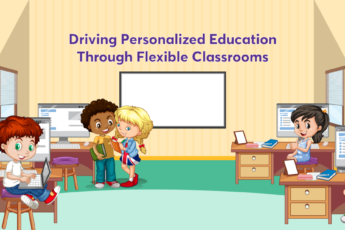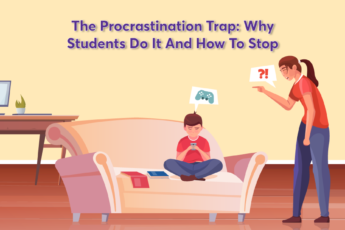8 Expert Suggestions To Help Set Up Successful Blended Classrooms

India has one of the largest education systems in the world, providing learning to more than 260 million students with around 1.5 million schools. Most of these schools depended on traditional methods of teaching and learning in the classroom, until the COVID pandemic pushed us to revise our existing techniques.
The blended learning model, defined as ‘a style of education in which students learn via electronic and online media as well as traditional face-to-face teaching’, was seen in some classrooms across the globe, but had experienced little popularity in India. With the migration of classrooms into the digital learning space, and in the interest of further boosting the education sector, the Ministry of Education has mandated blended classrooms as a new method of teaching and learning. Apex educational bodies in India like NCERT & CBSE have already announced their intentions of implementing a hybrid system of schooling with blended learning post the lockdown.
We at Square Panda believe this move towards a blended classroom will benefit learners across India, particularly young learners.
Here are our expert suggestions for setting up successful blended learning models in classrooms across states, divided as per stages:
PLANNING STAGE
- Redefined Educators’ Roles: Educators, particularly anganwadi workers (add link to anganwadi blog post) and primary educators, are the lifeblood of the teaching learning process. In the new blended model, each educator will play a new role with enhanced skill requirements. To see successful implementation, each educator from the ground up has to be trained in 21st century skills, to understand the neuroscience behind early learning and to enable holistic development of children.
- Restructure Curriculum: The existing curriculum needs to be reworked to adopt the NEP 2020 vision of experiential learning in a blended classroom. A flexible design, with multi-platform availability to reach even the most remote of areas, is a good start towards standardisation of education, ensuring no child is left behind.
- Factor In The Digitally Deprived Learners: The NEP 2020 addresses this concern, by concluding that, “the benefits of online/digital education cannot be leveraged unless the digital divide is eliminated through concerted efforts, such as the Digital India campaign and the availability of affordable computing devices. It is important that the use of technology for online and digital education adequately addresses concerns of equity.” Not every child will have access to digital tools necessary to make blended classrooms a success, and if they do, internet connectivity can pose a problem. It would be more effective to take these challenges into account at the planning stages itself, and work with tools and aids that provide easy-to-access offline content which can reach learners even in the heartlands without any trouble.
- Private + Public Collaborations: The ed-tech sector in India is booming, as evidenced by an Omidyar Network India & RedSeer Report, which estimates that by 2022, the K-12 ed-tech market in India will be worth USD 1.7 billion. This trend can be used to the government’s advantage. Partnerships and wide scale collaborations with educationally inclined companies and foundations can bring in the necessary innovation and tools that turn the NEP 2020 vision into a reality.
IMPLEMENTATION STAGE
- Retraining Educators: Every educator involved in ECCE needs retraining to acquire new-age skills that will help them optimise technology at the ground levels, for better teaching and learning experiences. The training must involve the currently envisioned pedagogy, keeping in mind the young learners’ educational needs. Again, NEP 2020 recognises this, adding value to content creation by teachers themselves, adding that they need to be trained and equipped with digital knowledge to be able to create online content modules with ease.
- Using Aids & Tools: Adopting blended learning models in classrooms across states would be easier with digital tools, to aid with implementation and future hand holding and support, for workers at all levels.
REVIEW STAGE
- Pilot Studies: Administrators can test the efficacy of programs and plans to be used in their blended learning program with a scaled down group, as a precursor to a complete roll-out. These results can be used for continuous improvement, to decide on the preferred forms of e-content, areas of challenge, and more.
- Different Blended Learning Modes To Suit Requirements: Face-to-face interactive learning sessions are extremely crucial to the success of blended learning classrooms, and need to be factored into the program structure, after the planning and implementation process. As states are armed with suitable knowledge about the extent of implication blended learning has on overall outcomes, they can suitably identify different modes of blended learning to suit each subject, classroom, district, and state.
While the recent pandemic pushed the Indian education system to adapt to a new way of learning, we saw a new beginning with more opportunities to bring in equality to learning. There is a need to seize this chance, making a concerted effort to impress the need for blended classrooms and learning across our country.




Leave a Comment